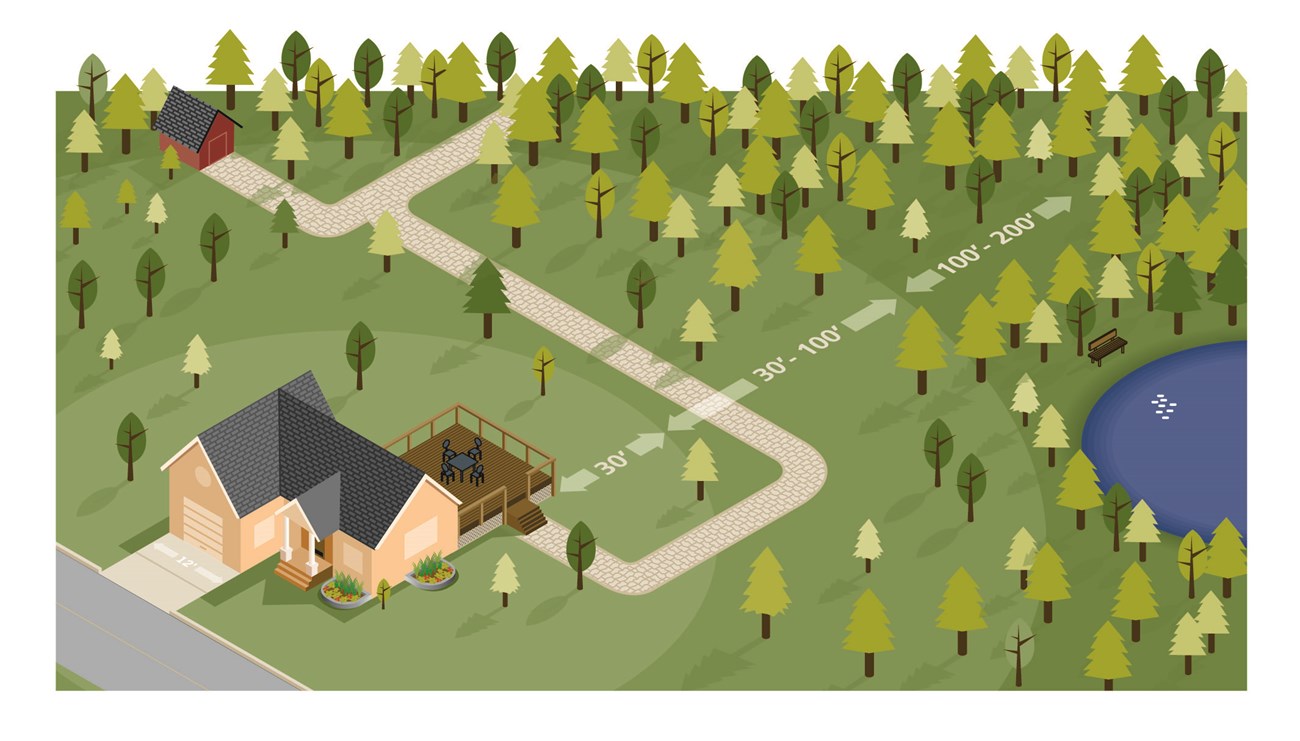
firewise.org Creating a Defensible Space Using the Zone ConceptUsing the Zone Concept Zone 1 encircles the structure and all its attachments (wooden decks, fences, and boardwalks) for at least 30 feet on all sides. Note: the 30-foot number comes from the very minimum distance, on flat ground, that a wood wall can be separated from the radiant heat of large flames without igniting. In this area:
Zone 2 is 30 to 100 feet from the home, and plants in this zone should be low-growing, well irrigated and less flammable. In this area:
Zone 3 is 100 to 200 feet from the home and this area should be thinned, although less space is required than in Zone 2. NOTE: Because of other factors such as topography, the recommended distances to mitigate for radiant heat exposure actually extend between 100 to 200 feet from the home – on a site-specific basis. In this area:

dnr.wa.gov FREE: Home Fire Risk AssessmentsAsk for help to determine what is most important. The Washington State Department of Natural Resources (DNR) offers free Home Risk Assessments to evaluate whether your home has a chance of surviving a wildfire. The inspection will provide suggestions about how to improve your safety by removing fuel. Call the DNR Northeast Region office at 509-684-7474 to schedule an appointment. If your home is within 200 feet of National Park Service land, you can also contact the Lake Roosevelt Fire Management Program for assistance.Grants for Fuel Reduction Around HomesApply for funding to help pay for the cost. Washington State Department of Natural Resources (DNR) has several grants to assist landowners with reducing the risk of wildfire around homes and improving forest health. These grants can be used for thinning, pruning and clean up of slash. Proper vegetation management will protect your property from wildfire and also increase the health of your trees and shrubs. Better health will also help your forest fight off bark beetle and disease attacks. If you have property in Eastern Washington you may qualify for these grants. Funding for these grants is provided by the Bureau of Land Management and U.S. Forest Service. For more information, call the DNR at (509) 684-7474.Debris Burning GuidelinesBe sure it is a burn day before burning your piles.1) Call 1-800-323-BURN to make sure it is a burn day 2) To see if you need a permit, call (509) 685-6900. 3) Put a fire break around the debris pile. 4) Keep water and equipment nearby. 5) Do not leave your debris pile unattended. 6) Check the fire to make sure it is completely out. Campfire SafetyBe sure campfires are allowed before you make one. Use an established fire ring. Keep water and a shovel nearby to extinguish the fire. Keep all burning materials inside the fire ring. Keep all unused firewood at least 10 feet away from the fire ring. Never leave a fire unattended. Be sure your campfire is dead out before leaving -- use water, stir, and make sure all coals are cold. |
Last updated: April 12, 2017
